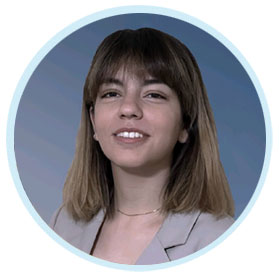Following the implementation of COARE 3.6 in the EFDC+ code, a new option for calculating water surface heat exchange has been added. This option is in addition to the existing methods, which include:
- No Atmospheric Linkage
- Full Heat Balance
- Equilibrium Temperature (CE-QUAL-W2)
- External Equilibrium Temperature
Several tests have been conducted to validate the performance of this enhancement. In this blog, we will discuss the temperature results of the Lake Mendota model produced by COARE 3.6 compared to the existing options for surface heat exchange.
Model Demonstration
Lake Mendota is a freshwater eutrophic lake that is the northernmost and the largest of the four lakes in Madison, Wisconsin, USA. The lake has an area of 39.61 km2, with a mean depth of 25 m. The location of the lake and its flow boundaries are shown in Figure 1a. Lake Mendota’s mixing regime is characterized by a summer stratification period from late April through October and an inverse winter stratification period under ice. The lake’s air temperature ranges from -39 to 40 C. The computational grid consists of 1,373 active water cells from a grid of 54 x 54 horizontal cells. The grid cells have sizes 189 x 166 m. A Sigma-Zed layering was applied with the number of vertical layers varying from 2 to 10. The model grid and lake bathymetry are shown in Figure 1b. A time step of 10 seconds was used throughout the simulation for a period of 30 days from 2012-08-01 to 2012-08-31.
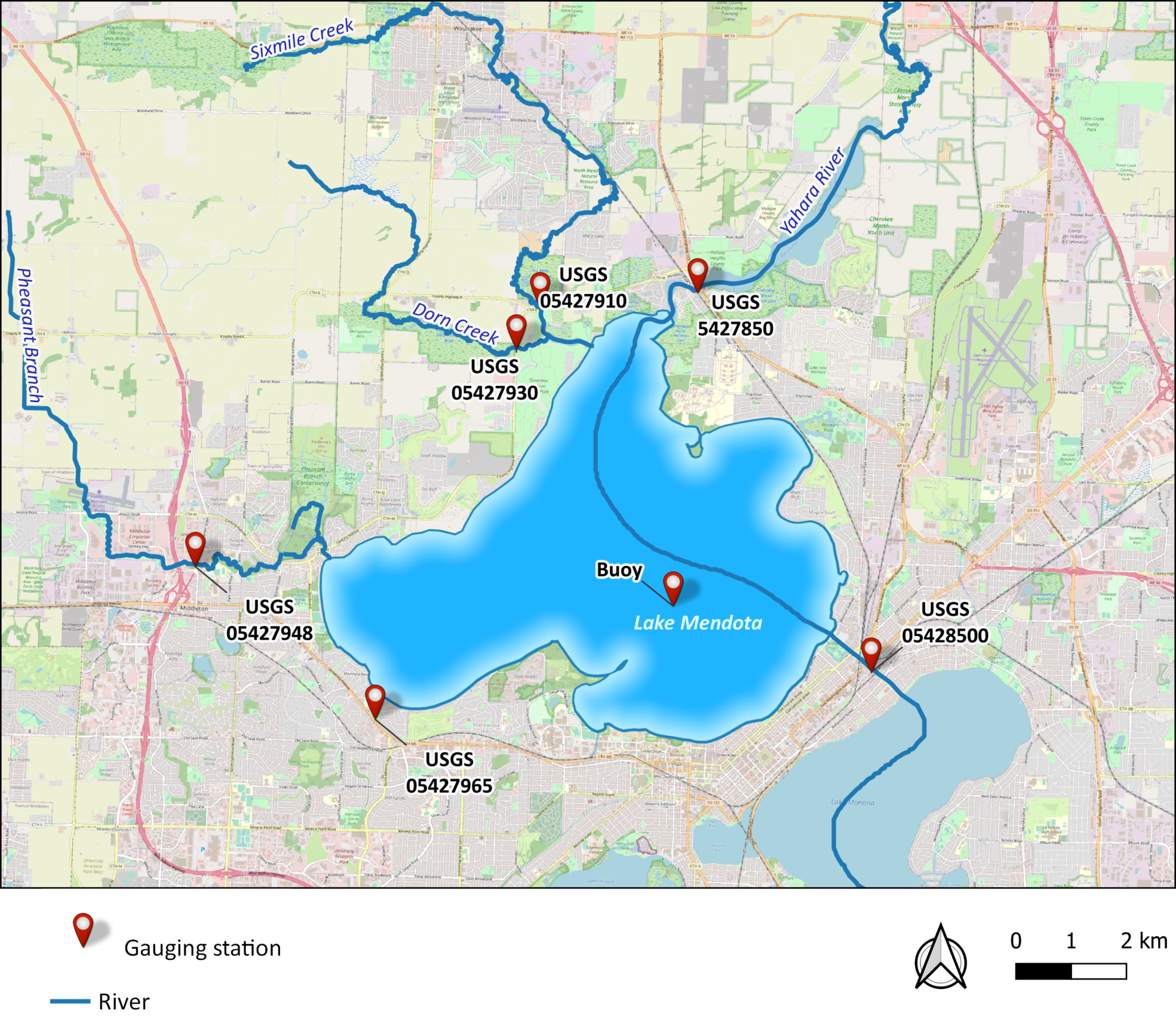
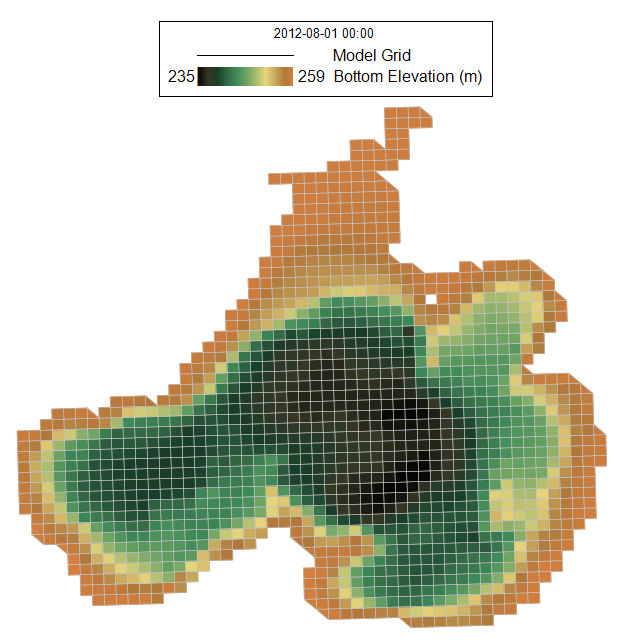
The model was run with three different options for Surface Heat Exchange, including:
- Full Heat Balance
- COARE 3.6
- Equilibrium Temperature (CE-QUAL-W2)
For all the model runs, solar radiation was computed with the option “Spatially and Temporally Varying Extinction coefficient,” which employs “Background Light Extinction” as the only input parameter.
Results and Discussions
The measured and simulated water temperatures at the Buoy station are shown in Figure 2. All three options captured the major variance of water surface temperature. Compared to the measured data, the “Full Heat Balance” overestimated the water surface temperature at the beginning and ending periods of the simulation. The “Equilibrium Temperature Method” and “COARE 3.6” options produced better results initially but underestimated the water temperature at the end of the simulation. In general, the simulated water temperature agrees very well with the observed data.
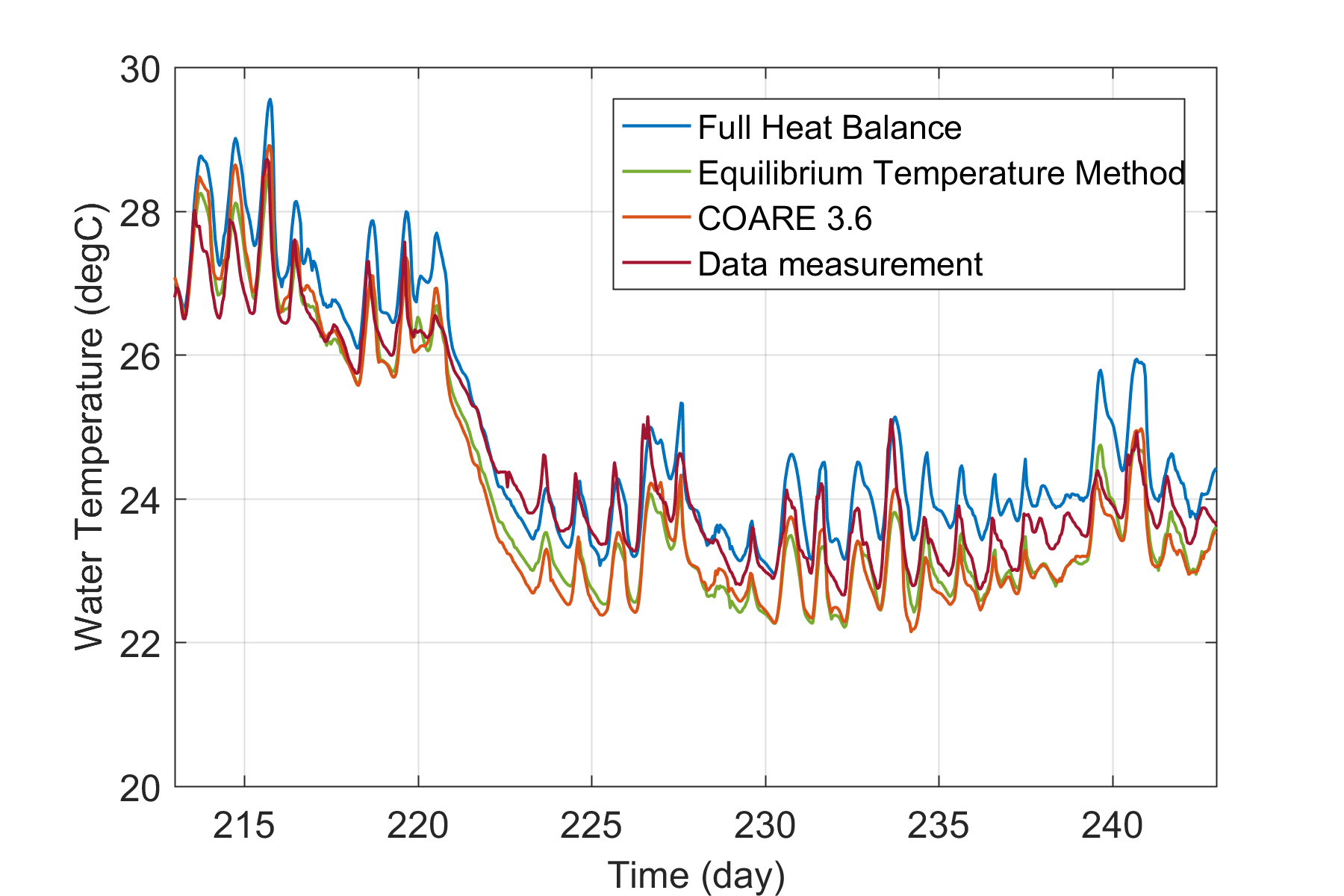
A detailed comparison of the latent heat flux and sensible heat fluxes for the “Full Heat Balance” and “COARE 3.6” options are shown in Figures 3.1 and 3.2. This comparison is not available for the “Equilibrium Temperature Method” because, in this method, all separate heat exchange processes are summarized in the coefficient of surface heat exchange and the equilibrium temperature. The plots show both “Full Heat Balance” and “COARE 3.6” options producing similar latent and sensible fluxes results as part of the surface heat exchange processes. A slightly higher latent heat flux from COARE 3.6 may be observed for most of the simulation period. This higher latent heat flux is expected because the COARE algorithm allows evaporation even with a zero value of wind speed. This result is achieved by introducing the gustiness velocity parameter, unlike the “Full Heat Balance” algorithm in EFDC+.
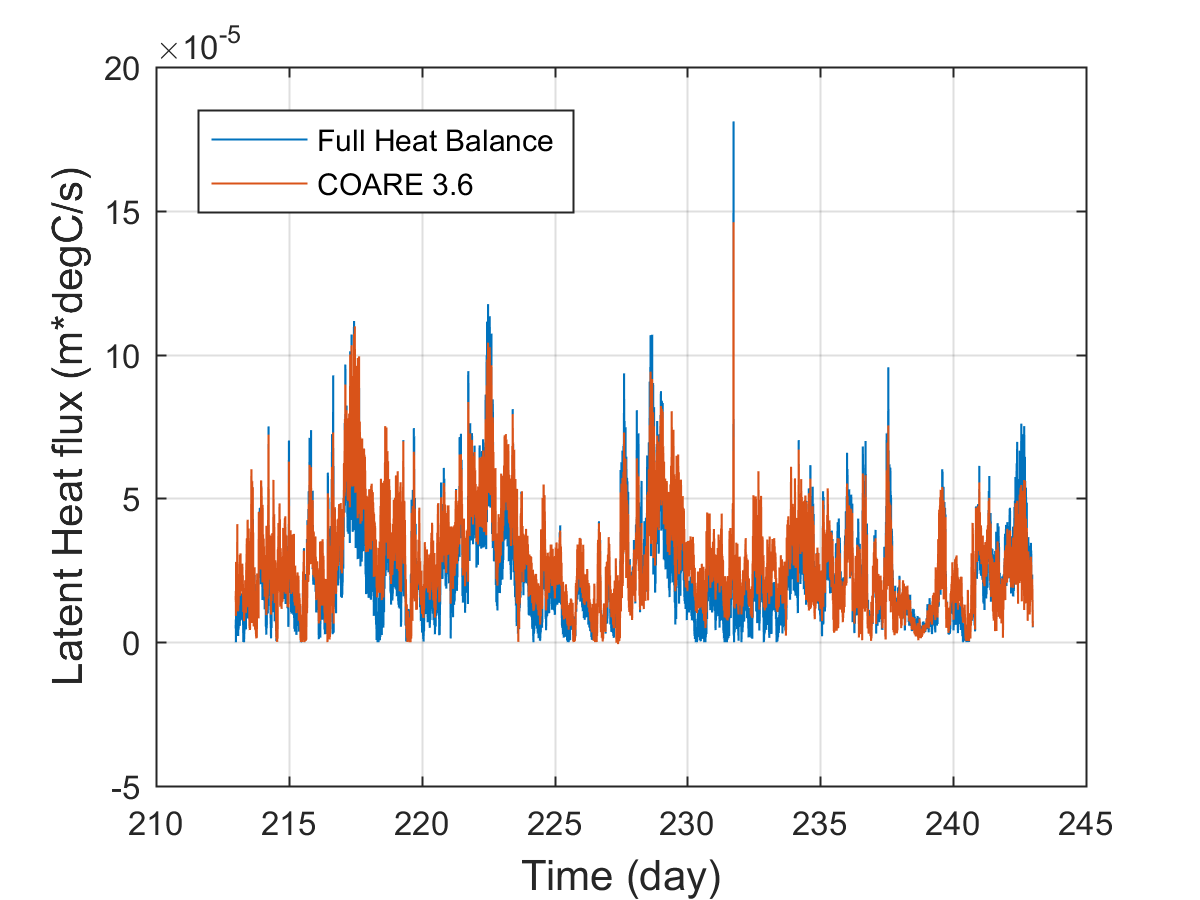
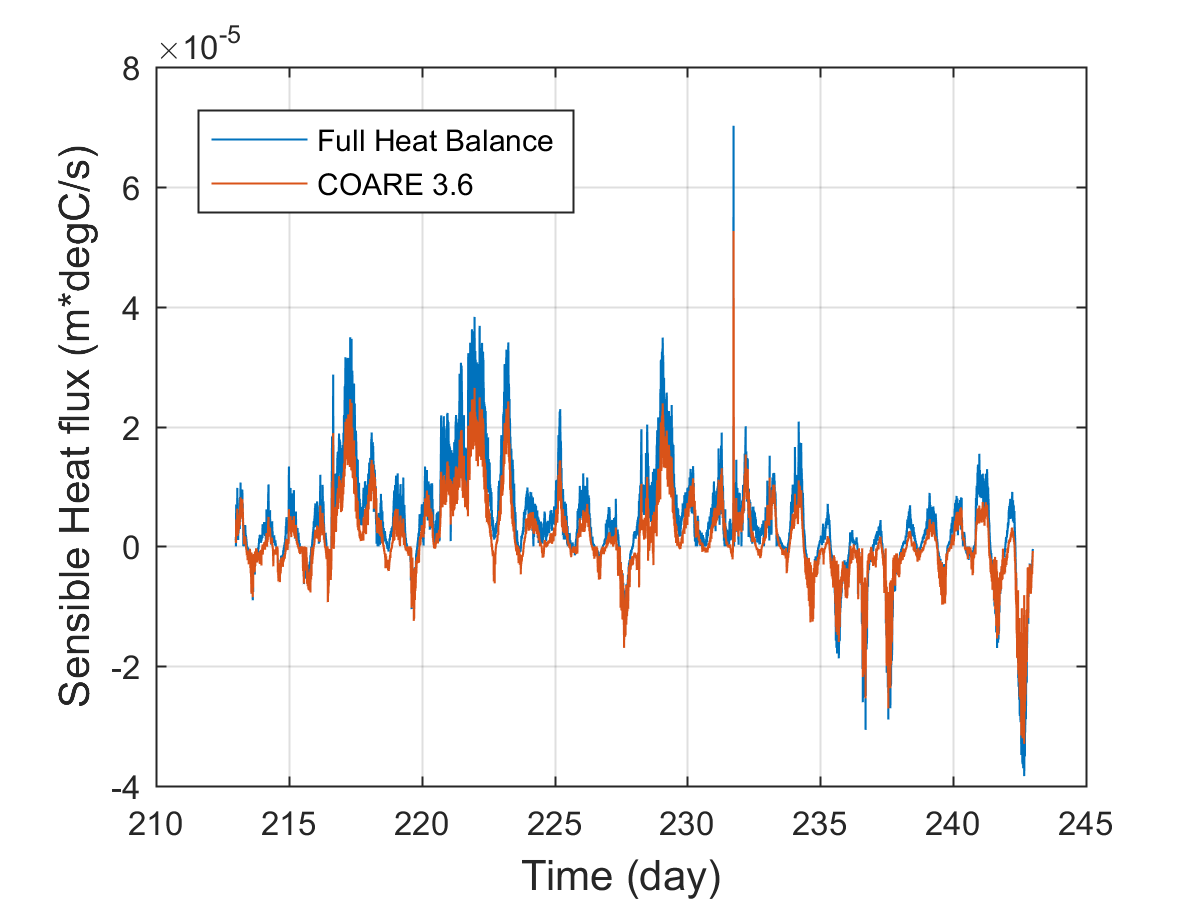
COARE is one of the most frequently used algorithms in the air-sea interaction community. With the implementation of COARE 3.6 in the EFDC+ code, we have demonstrated that the algorithm can also be applied in freshwater bodies such as Lake Mendota. As an option for surface heat exchange, it produces reliable results of the water surface temperature when compared to the observed data. Different terms of heat fluxes in the surface heat exchange processes were also comparable to the legacy Full Heat Balance option. In addition, like the “Equilibrium Temperature (CE-QUAL-W2)” option, heat transfer coefficients are unnecessary when using COARE 3.6. This is because the coefficients are estimated internally by the algorithm. In practice, this feature simplifies the calibration process for the water surface temperature.

